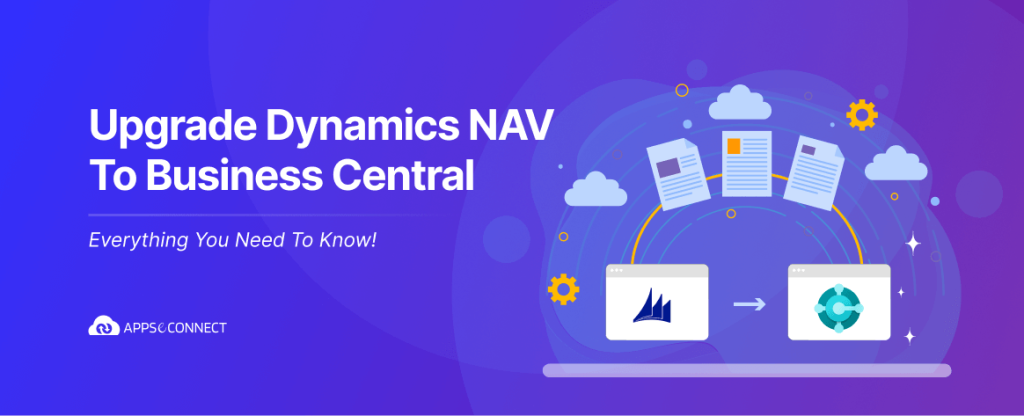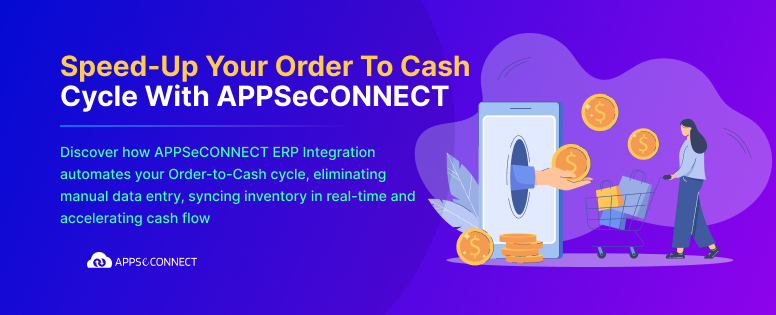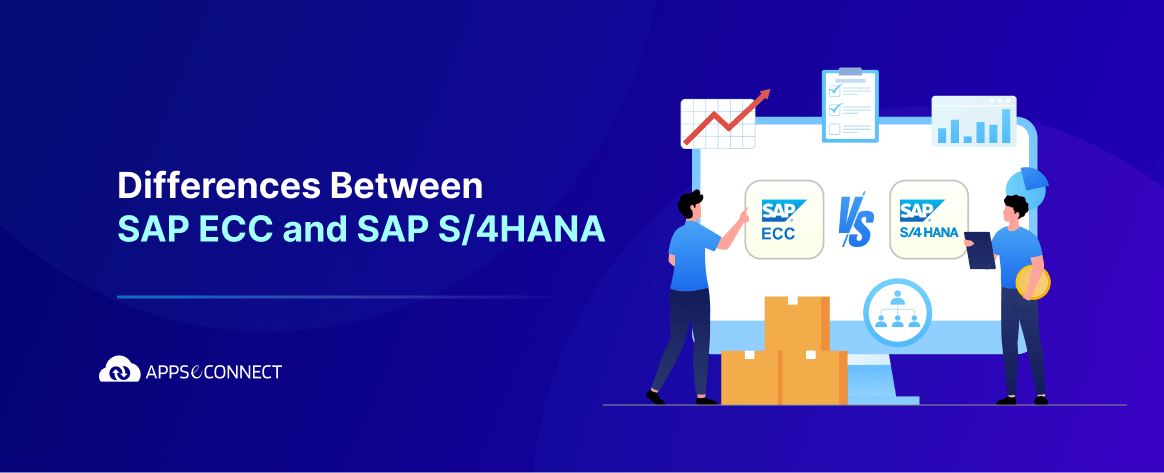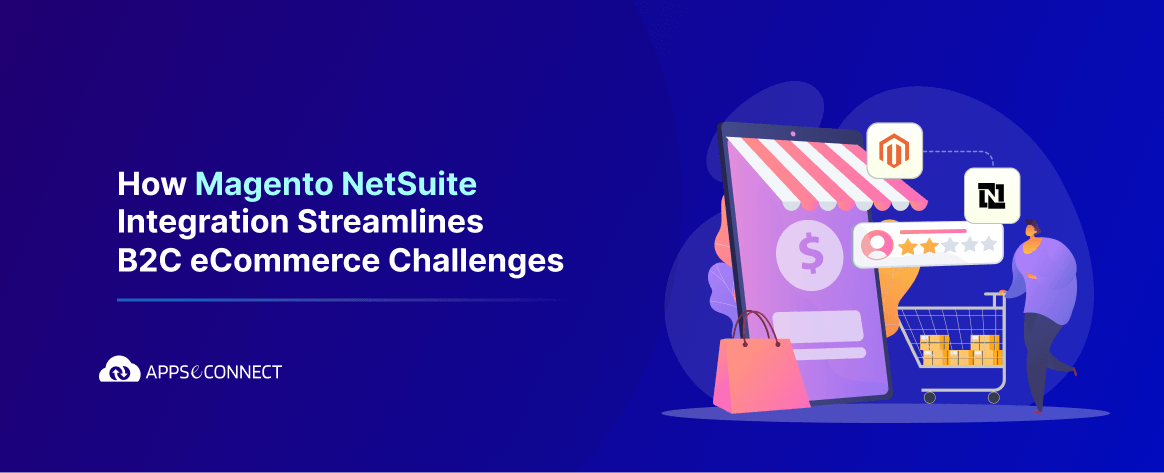For more than two decades, Microsoft Dynamics NAV has served as a reliable backend system for countless small and medium businesses. But Microsoft finally ended support for Dynamics NAV on 10th January 2023 (extended support till 2028), with plans to fully replace the ERP with its more powerful and advanced successor – Dynamics 365 Business Central. That is why businesses that are still using the older and outdated system must upgrade Dynamics NAV to Business Central. This ensures not only access to the latest ERP features but also ongoing support and updates from Microsoft.
However, migrating your entire business data, workflows, and configurations from NAV to Business Central is definitely no walk in the park. We’re talking about moving huge volumes of critical business data from one system to another. It takes intensive planning, preparation, and weeks or even months of execution. If this process feels overwhelming, we’re here to guide you.
In this post, we will dig deeper into both Dynamics NAV and Business Central, exploring the features and capabilities of both systems. We’ll provide a detailed comparison between the two, and then give you a complete step-by-step guideline to upgrade from Dynamics NAV to Business Central.
All About Microsoft Dynamics NAV
Microsoft Dynamics NAV is an ERP solution designed for small and medium businesses to manage and automate various business processes and core operations. It is primarily an on-premise application, but later versions of NAV were upgraded to support cloud deployment on Microsoft Azure.
Let us take a tour through the history and development of NAV, its features and modules, pricing, licensing, and more.
History and Evolution of Dynamics NAV
Dynamics NAV was not always a part of Microsoft’s business solutions. Its history dates all the way back to 1983 when the company Personal Computing & Consulting (PC&C) was founded in Denmark. In 1985, PC&C launched their first product PCPlus – a single-user accounting software for small businesses. Two years later, an upgraded version of PCPlus was released as a client-server application, and it was called Navigator.
It was released only in Denmark, and this was the first edition of what we now know as Microsoft Dynamics NAV. From there on, here are some important dates and events in the evolution of Dynamics NAV.
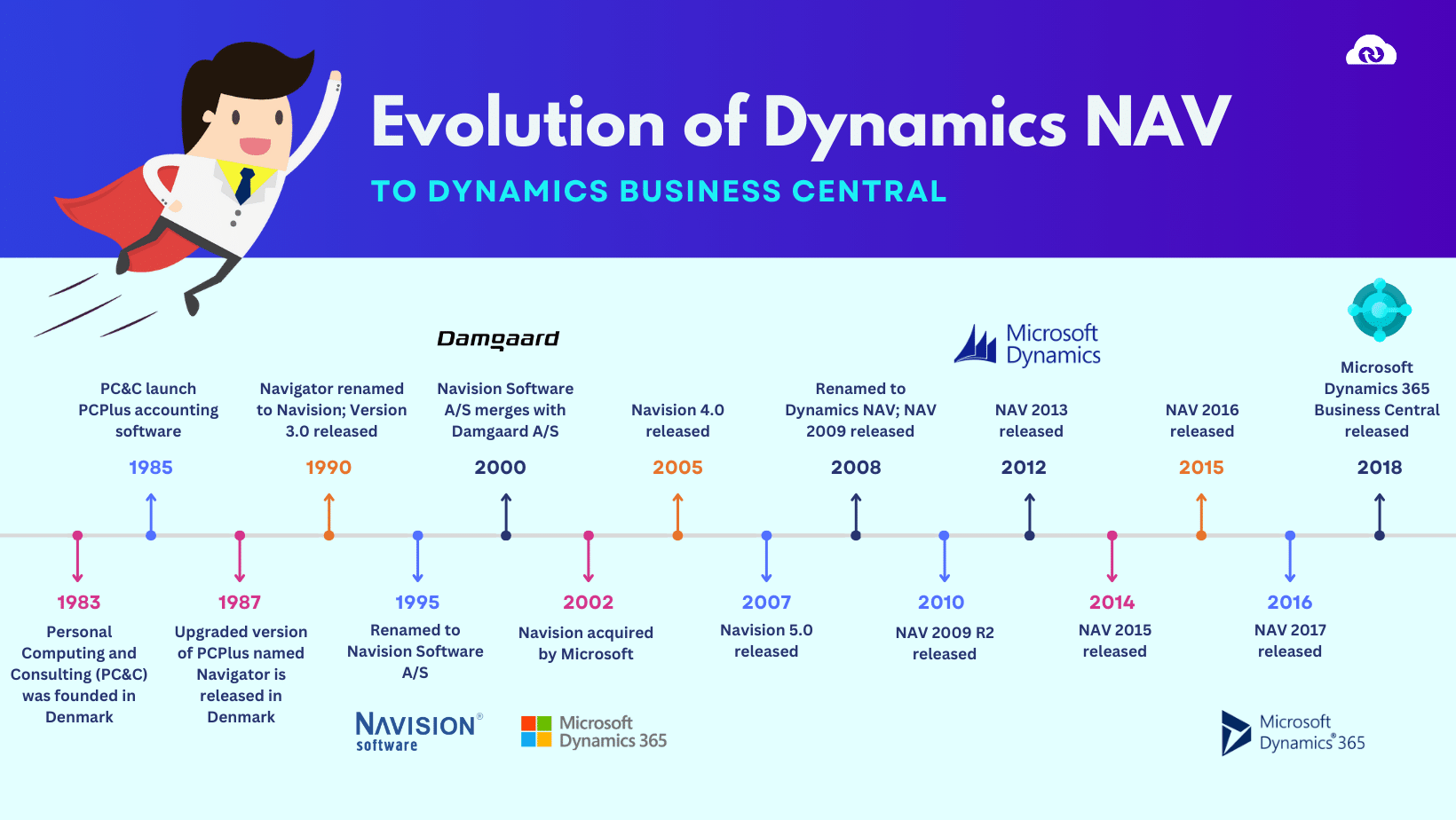
1990: The application was renamed to Navision, and version 3.0 was also released. It was no longer limited to Denmark, as it expanded to Spain, Germany, and UK.
1995: Navision Financials Windows 95 version was released. The company was renamed to Navision Software A/C.
2000: Navision merges with its biggest competitor in Denmark – Damgaard A/S. The company is first renamed to NavisionDamgaard A/S, and then to simply Navision A/S.
2002: This is the year when Microsoft acquired Navision, and included it as part of their Microsoft Business Solutions.
2005″ Navision is rebranded to Dynamics NAV.
2008: Dynamics NAV 2009 released.
2010: Dynamics NAV 2009 R2 released.
2012: NAV 2013 released.
2014: NAV 2015 released.
2015: NAV 2016 released.
2016: NAV 2017 released.
2017: NAV 2018 released.
This was the last version of Dynamics NAV, after which Microsoft launched Dynamics 365 Business Central as its successor.
Features and Modules
As of the last edition of NAV 2018, the following features and functionalities are available in this ERP system.
Financial Management
Manage all financial aspects and transactions of a company, such as general ledger, budget allocation, account schedules, cash flow, fixed assets, bank management, and more.
Supply Chain Management
Streamline and optimize supply chain processes, including sales orders, purchase orders, invoices, shipping, inventory management and warehousing, item tracking, vendor management, etc.
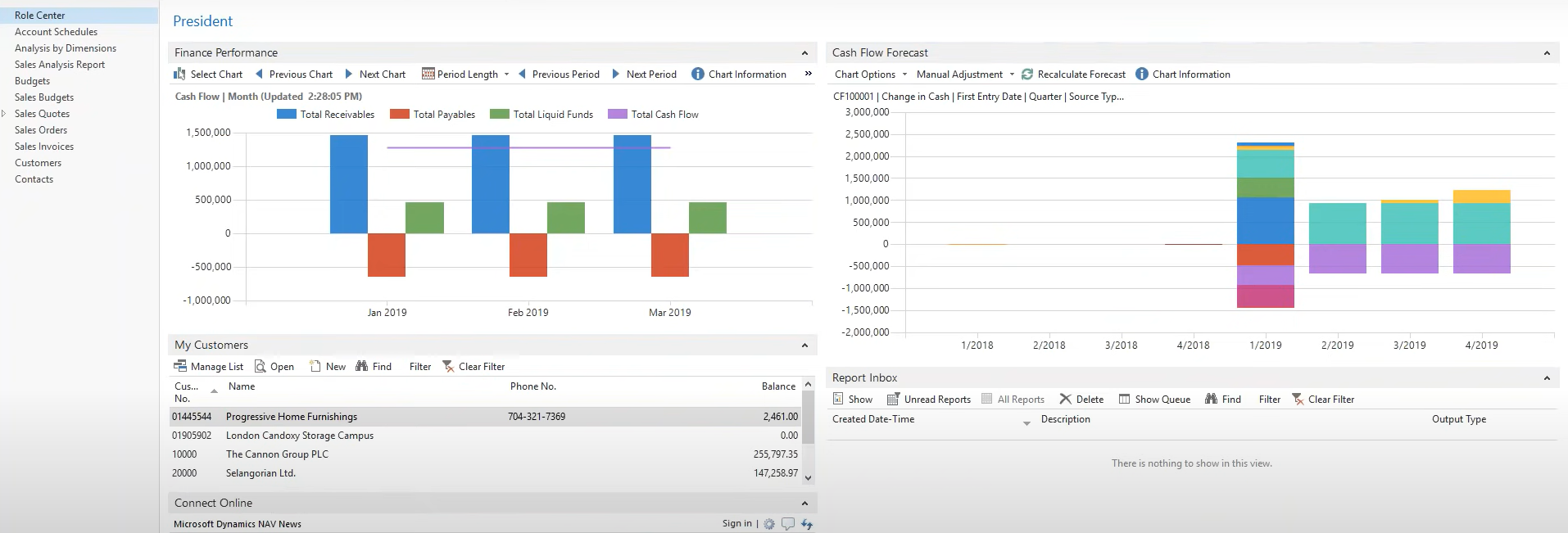
Project Management
Effectively plan, execute, and monitor projects with features such as capacity management, multiple costs and estimates, jobs, and time sheets.
Customer Relationship Management
Dynamics NAV also offers some basic CRM functionalities like contact management and classification, campaigns and opportunity management, Outlook integration, etc.
Manufacturing
Handle various aspects of the manufacturing process such as production orders, production bill of materials, agile manufacturing, capacity planning, and demand forecasting.
Human Resource Management
Some basic HR management features are also available in NAV 2018, which is mostly limited to employee management and attendance tracking.
Service Management
Includes features for managing service-related processes such as order, service item, price, and contract management, as well as planning and dispatching services.
Business Intelligence
Robust reporting and analytics tools with features such as setting up and publishing KPIs, analyzing data by dimensions, creating reports with XBRL, etc. that assists organizations in making informed decisions for business growth.
Add-ons
Microsoft NAV also has a network of trusted independent software vendors who develop add-ons that add extra functionality and customizations for the ERP system.
Pricing and Licensing
Microsoft Dynamics NAV is exclusively distributed through Microsoft Dynamics Certified Partners and offers a perpetual licensing plan. That means users can gain lifetime access to the ERP system with a one-time payment. There are four different types of licenses that you can purchase based on your business requirements.
Starter Pack: The Starter Pack offers full access for three users to NAV’s core financials, distribution, and professional services modules at a fixed rate.
Extended Pack: For users requiring additional functionality beyond the Starter Pack, the Extended Pack serves as an add-on, providing access to additional features such as manufacturing and warehousing capabilities.
Full User License: If you want to add more users to your Standard or Extended Pack, you can purchase extra user licenses for a fixed rate. A ‘full user’ license grants the user complete read and write access to all of NAV’s functionalities.
Limited User License: A ‘limited user’ license grants read-only access to the user, along with some limited write access in some areas.
The exact pricing for these packs and user licenses will vary based on additional reseller services and bundles. Having said that, here are the approximate costs for each type of license:
Standard Pack: $5,000
Extended Pack: $10,000
Full User License: $3,000 per user
Limited User License: $600 per user
All About Microsoft Dynamics 365 Business Central
Dynamics 365 Business Central, Microsoft’s modern ERP solution, takes the baton from its predecessor, Dynamics NAV, aiming to provide small and medium-sized businesses with a comprehensive business management platform. Built and optimized for the cloud, Business Central offers a seamless integration of sales, service, finance, and various other core business processes.
As a cloud-based ERP solution, it enables businesses to access their data anytime, anywhere, fostering collaboration and efficiency. But for businesses who’d prefer to have it locally installed and managed, Business Central on-premises is also available. The transition from Dynamics NAV to Business Central signifies a leap into a more dynamic and feature-rich ecosystem.
History and Development of Dynamics 365 Business Central
In 2016, Microsoft revamped its enterprise applications into one unified platform – Dynamics 365. As part of this change, they planned to upgrade the NAV ERP system into a more efficient cloud-based solution, which was initially and temporarily named “Tenerife”. Then in 2018, the brand new, modern version of Dynamics NAV was launched as Dynamics 365 Business Central.
From there onwards, the brand new ERP system received constant bi-yearly updates, with a new version released on April and October of every year. Currently, the latest version available is Dynamics 365 Business Central 23.
Features and Modules
Dynamics 365 Business Central offers everything that NAV ERP offers, plus a lot more. Here’s a quick overview of its diverse features and functionalities.
Financial Management
- Manage payables and receivables, VAT, invoices, inventory costs, and cash flow
- Managing intercompany transactions
- Consolidating financial data from multiple companies
- Update currency exchange rates
- Analyze financial reports and statements on Excel
Sales
- Setting up sales campaigns
- Managing sales quotes
- Processing sales returns and cancellations
- Tracking packages and calculating delivery dates, and more
- Detailed sales reports to measure sales performance
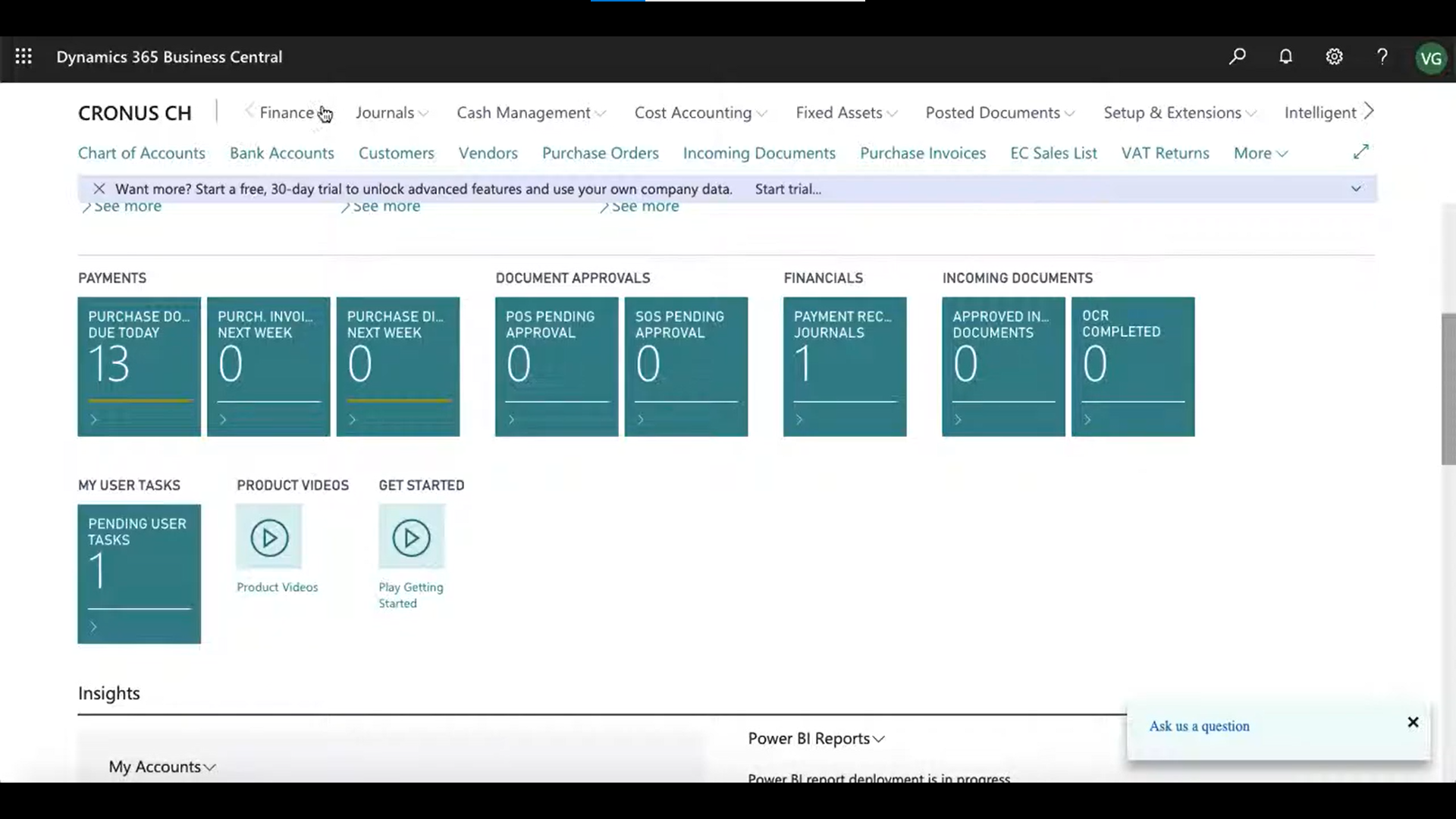
Purchasing
- Setting up purchase approval workflows
- Requesting quotes; recording purchases
- Processing purchase returns
- Receiving and converting e-documents
- Purchase reports and statistics
Inventory
- Registering new items and categorization
- Working with catalog items and item attributes
- Item tracking with serial, lot, and package numbers
- Reserve or block items
- Inventory and warehouse reports
Project Management
- Create jobs, manage job budget, job supplies
- Monitor job performance
- Use time sheets and resources for projects
Fixed Assets Management
- Acquire and maintain fixed assets
- Revaluation of fixed assets
- Fixed assets insurance
- Split, combine, or transfer fixed assets
- Depreciate fixed assets
Relationship Management
- Setting up and creating contacts, merging duplicate records
- Creating segments, managing interactions and adding contacts to segments
- Automatically recording interactions with contacts
- Processing sales opportunities
Human Resource Management
- Registering employees
- Managing employee attendance
Manufacturing
- Create production orders with info from items, routings, machine centers, and work centers.
- Managing subcontract work with vendors
- Batch post-production consumption
Additional Features
- Warehouse management; service management
- Business intelligence, built-in analytics, ad-hoc analytics, power BI reporting
- Copilot and AI capabilities
These are not even the full list of features, but a highlight of the most notable ones. It’s evident that Business Central is a comprehensive ERP system that can manage every aspect of operating small and medium businesses.
Pricing and Licensing
Similar to Dynamics NAV, Business Central can also only be purchased from official Microsoft partners or resellers. But while NAV 2018 had a perpetual licensing plan, in the case of Business Central licenses, the pricing is based on a subscription model and is billed per user per month. There are three types of paid licenses available for users who want to buy and use Dynamics 365 Business Central.
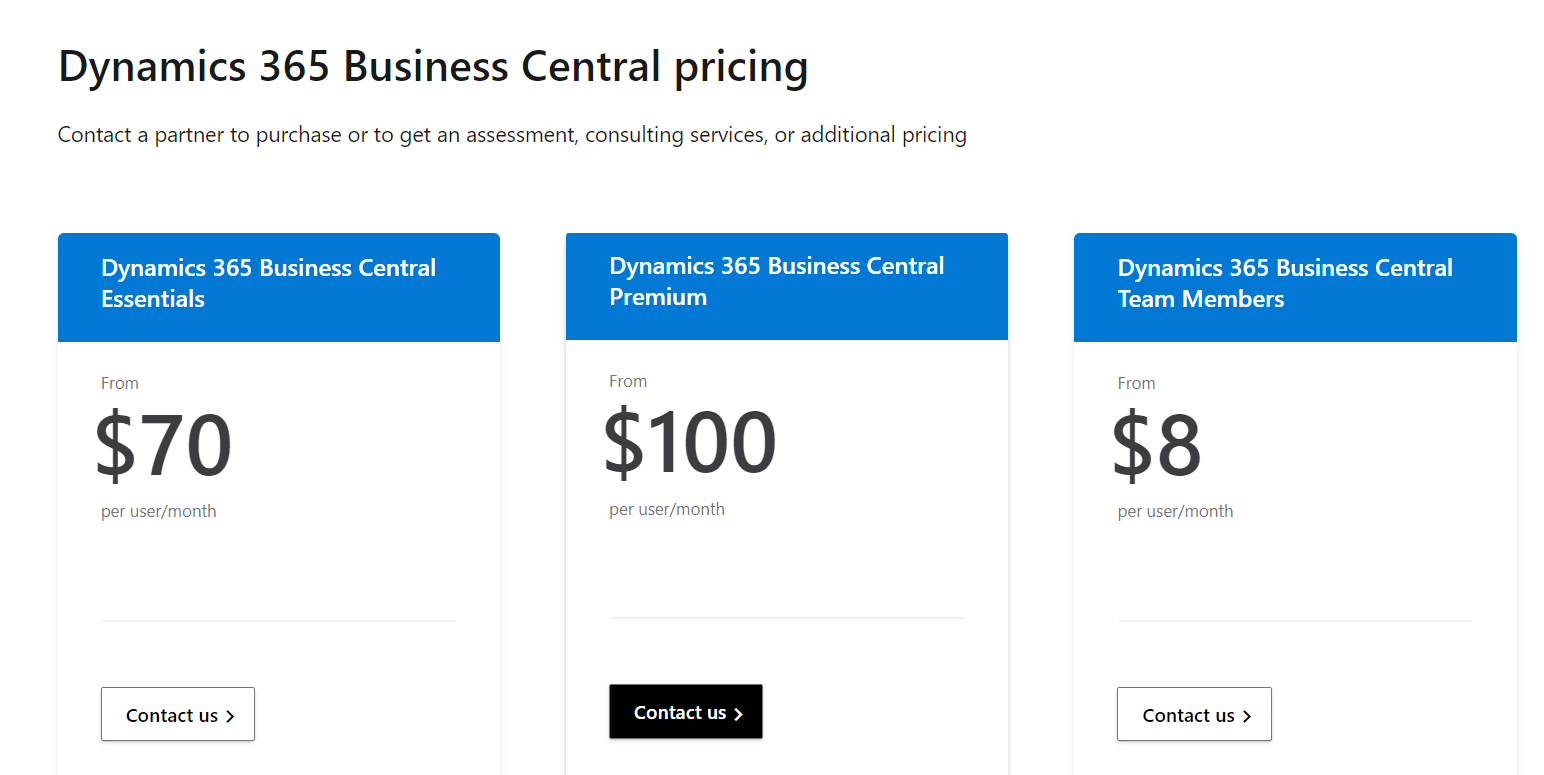
- Dynamics 365 Business Central Essentials: $70 per user per month
Full access to the core modules of finance, sales, purchasing, inventory, supply chain, project management, and warehouse management. - Dynamics 365 Business Central Premium: $100 per user per month
Everything in the Essentials pack plus the service management and manufacturing modules. - Dynamics 365 Business Central Team Members: $8 per user per month
Grants read-only access to users with some other basic functionalities.
Why Upgrade Dynamics NAV to Dynamics 365 Business Central?
Now that we’ve explored the features, pricing, and other details of both NAV and Business Central, you need to realize why it’s essential to upgrade and migrate from the outdated version of NAV to its latest, more powerful, new system version which is Microsoft Dynamics Business Central.
On-premise vs. Cloud
NAV ERP has primarily been an on-premise application, although there is the option to have it hosted on Microsoft Azure. On the other hand, Business Central has always been cloud-based from the start, and one of the main purposes of rebranding the ERP system was to shift towards a flexible and more efficient cloud application.
Updates and Support
Business Central follows a modern approach to software updates, with bi-yearly releases introducing new features, improvements, and security patches. It will receive automatic updates on the cloud, while the on-premise Business Central solution must be updated manually. This contrasts with Dynamics NAV which will no longer receive active support from Microsoft.
Accessibility and Collaboration
One significant advantage that Dynamics 365 Business Central holds over Dynamics NAV is its accessibility and collaboration features. Being a cloud-based solution, Business Central allows users to access their data and perform tasks from anywhere with an internet connection. This fosters collaboration among team members, especially those working remotely, and ensures real-time updates across the organization.
Ease of Integration
Microsoft Dynamics Business Central is based on the AL language, while Dynamics NAV is based on the C/AL language. The key factor here is that customizations, additional development, and integrations become much easier with AL language. As such, Business Central provides better support for building and consuming web services and APIs. With the increasing emphasis on RESTful APIs and web-based integrations, AL simplifies the process of connecting with external systems and services.
Intuitive User Interface
Business Central introduces a modern and intuitive user interface, streamlining navigation and ensuring a role-tailored experience. This contributes to increased user adoption and productivity, as users can quickly access relevant information based on their responsibilities.
Dynamic Scaling
Business Central’s cloud-based infrastructure, powered by Microsoft Azure, allows organizations to scale their operations dynamically. This flexibility is particularly beneficial for businesses with fluctuating workloads, ensuring optimal resource utilization without the constraints of traditional on-premise setups.
Advanced Analytics and Reporting
With a strong emphasis on advanced analytics, Business Central leverages Power BI to provide actionable insights. Robust reporting features empower users to generate customized reports, visual dashboards, and key performance indicators (KPIs), enabling business to make data-driven, informed decisions and actionable strategies.
Cloud Cost Models
The cloud-based nature of Business Central often translates to cost-efficiency. Organizations can benefit from the cost model of Business Central, as instead of paying a fixed rate for the entire server, they only pay for user access to the system. Further, with minimal hardware requirements as compared to on-premise systems, significant infrastructure costs are also saved.
Upgrading from Dynamics NAV to Business Central: A Step-by-Step Guide
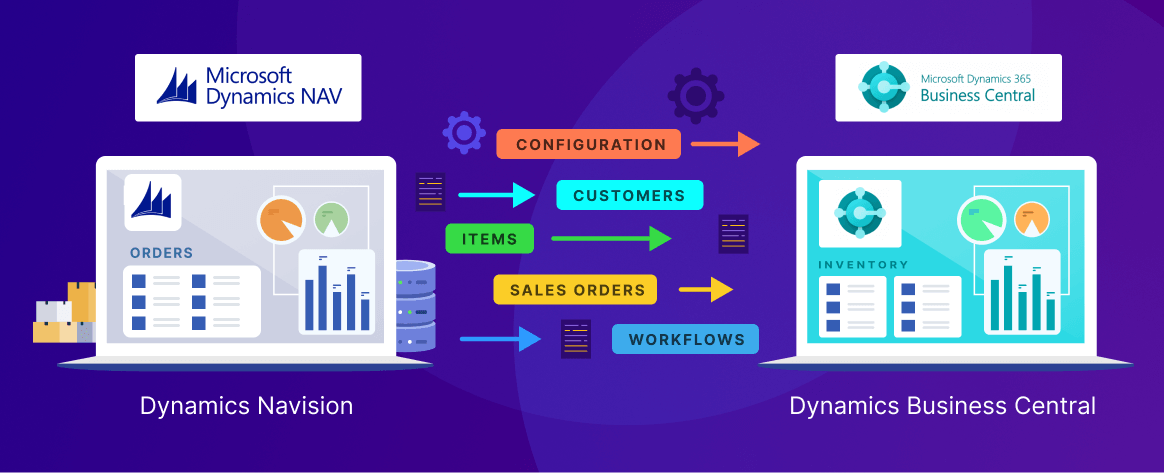
Now that we have a clear understanding of the features and differences between Dynamics NAV and Business Central, let’s delve into the steps involved in upgrading from Dynamics NAV to Business Central. This process requires careful planning and execution to ensure a smooth transition without disruptions to your daily operations.
Assess Your Current Dynamics NAV Deployment
Before initiating the upgrade, conduct a thorough assessment of your existing Dynamics NAV deployment. Identify and document the customizations, integrations, workflows, and data structures in place. This information will be crucial for planning the migration and ensuring that all essential components are accounted for in the new Business Central environment.
Review Customizations and Add-ons
Evaluate any customizations or add-ons that have been implemented in Dynamics NAV. Determine whether these customizations are still necessary or if there are equivalent features available in Business Central. Work with your IT team or consultants to modify or develop new customizations compatible with the latest ERP system.
Data Migration
Data migration is a critical phase in the upgrade process. Develop a comprehensive plan for migrating your data from Dynamics NAV to Business Central. This involves transferring customer records, financial data, inventory information, and any other relevant datasets. Ensure data accuracy and consistency during the migration to prevent issues in the new system.
Train Your Team
Provide training sessions for your team members to familiarize them with the new features and interface of Dynamics 365 Business Central. This training is essential to minimize disruptions and ensure a smooth transition. Consider creating documentation or tutorials to serve as references for users as they adapt to the updated ERP system.
Test the Migration
Before fully committing to the upgrade, conduct extensive testing of the migration process in a controlled environment. This includes testing data integrity, system functionality, and the performance of customizations. Address any issues or discrepancies discovered during testing to guarantee a successful transition.
Start Your Transition From Dynamics NAV to Business Central
Upgrading from Dynamics NAV to Business Central is a significant undertaking, but it is a necessary step to leverage the advanced features and benefits offered by the latest ERP solution from Microsoft. By carefully planning each phase of the upgrade process, businesses can ensure a smooth transition, minimize disruptions, and position themselves for continued success in an ever-evolving business landscape.
If you have any questions or need assistance during the upgrade, don’t hesitate to seek guidance from Microsoft-certified consultants or experts in ERP migrations. Remember, embracing change and innovation is key to staying competitive in today’s dynamic business environment.
Upgrading to Business Central? Explore Integration Options with APPSeCONNECT
The decision to transition from NAV ERP to its upgraded version of Business Central is definitely the right choice. But even after the upgrade, you will need to integrate your ERP system with other business applications like CRMs or eCommerce platforms.
Enter APPSeCONNECT, a low-code, intelligent integration platform as a service (iPaas) that seamlessly connects Business Central with a wide range of other applications. Easily integrate your backend ERP with other core applications through our various Business Central integration packages and automate your business processes. Streamline sales and purchases, manage finances seamlessly, and monitor every aspect of your organization by integrating with APPSeCONNECT.


